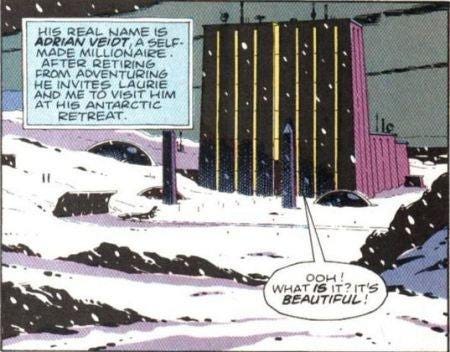There have been a few architecture critics dunking on the architecture in Marvel movies. There is a lot to love and hate about Marvel movies. They can be as exciting as anything the industry has to offer. They also possess the potential to be as corny, slow-paced, and boring as anything the industry has to offer. I don’t know that I would call any of them masterpieces of filmmaking, but they fill a specific niche in people’s lives. Being based on comic books puts a lot of restrictions on what they can and can’t do.





Without a doubt these buildings are horrible, but I think that misses the point of superhero architecture in the Marvel Cinematic Universe. These buildings are horrible in our world… in reality. These buildings were never designed to look “good” or function in reality, they are designed to look “good” and function in a world where spangled tights and floating magic capes are common place. A place where a rich guy based on Elon Musk flies around in an Amazon Alexa Powersuit™ and white guys can master elements of Asian culture at an alarming rate. Architects care a lot about context of buildings, but for some reason they overlook the context for designs when the context is beneath them.
The definition of architectural “context” is often manipulated to fit the taste of the critic, and not representative of any objective fact. The breadth of “context” is confined to the environment directly surrounding the building, like the style of a region or the height of building or maintaining an urban edge/fabric, and not the mode of its representation (if an architect uses the word “context”, it’s usually to cover for something they can’t explain. Always ask them to define the context since the definition is so malleable). If a building is represented in a fictional work, its shape should be molded to the theme the fictional work represents. This why the architecture in Blade Runner is so well loved despite the buildings being deeply nightmarish.
If “Form Follows Function” is a valid architectural theory, then the function of architecture in film necessarily takes priority over the building’s fictional function (I.E. a hideout should be a tropey mess, not a Beaux Arts masterpiece). The buildings in Marvel movies are cheesy sci-fi superhero hideouts, because that is their function and that his how they have been historically represented. I would argue that despite the buildings being hideous, that they are expertly designed to fit a function in a film. A perfect expression of “Form Follows Function”.
Worse than anything, I think these types of attacks on pop culture representation of architecture is seeded in elitism. I don’t think critical misunderstanding of the role of architecture in Marvel movies is intentional, but I do think that it shows a bias against the escapist entertainment that so many people love. I don’t think the same critics would be trashing the architecture Metropolis or Blade Runner for being “awful”.
Here are some architectural disasters that I LOVE because they work so well in the medium that they exist.
These are arguably some of the most important buildings in their respective mediums, yet I would argue that a theme park bath house, a modern tower of babel, and a brutalist concrete boot would be hideous if they were realized works. If architectural critics want to critique fictional architecture, check your taste at the door and try and discern whether the built experience enhances the point of the story. I.E. Form Follows Function.
(I have to say watching those buildings get destroyed in Marvel movies is 90% of the fun for me)










I agree with everything you wrote, including the elitist bias. But I also think a reasonable criticism would be that Marvel architecture (marvchitecture?) is milquetoast. I'd love to see more examples of giant Darth Vader-head HQs floating in swamps or similar. Frankly, I don't hate the buildings in Marvel, because they don't elicit any strong feelings, which, hell, maybe that IS form following function for those flicks.